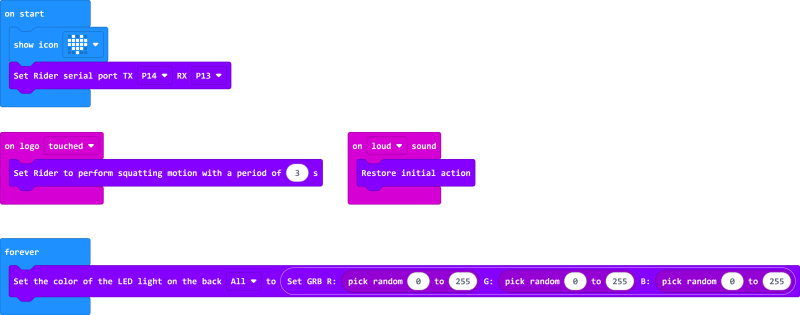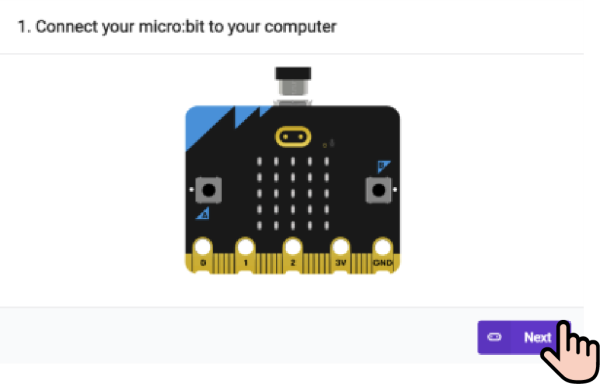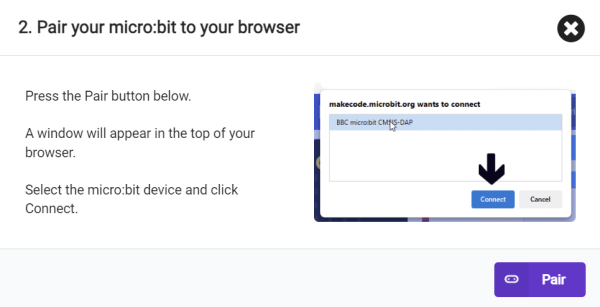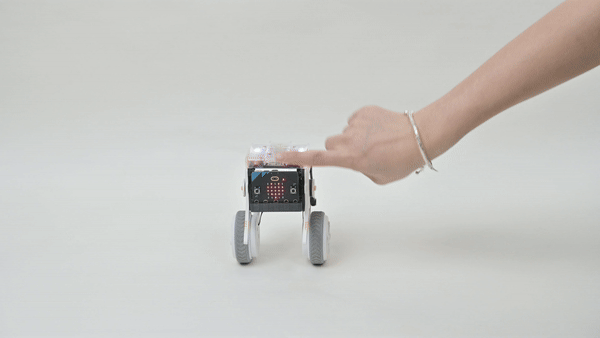Case 10 100 squats
Introduction
This course aims to guide students to understand and master the commands for controlling XGO Rider to perform cyclic squat movements. Through a combination of theoretical explanations and practical operations, students will learn how to accurately control the squat movements of XGO Rider and enhance its adaptability and flexibility in various application scenarios.
Teaching objectives
- Understand the basic principles of cyclic squat movements.
- Learn the programming commands for controlling XGO Rider to perform cyclic squat movements.
- Master how to achieve precise control of the squat cycle through programming.
Teaching preparation
Before starting teaching, please make sure you have prepared the following necessary materials:
 | micro:bit V2 |
|---|---|
 | XGO-Rider |
 | USB Cable |
 | PC |
- In the pop-up window, these materials will provide you with a complete experience, ensuring that you can smoothly carry out subsequent operations and learning. If you have prepared the above content, we can proceed to the next step.
 After turning on the XGO Rider, in order to keep the fuselage balanced, it needs to move back and forth slightly. Please do not place the XGO Rider on the edge of the table or in a dangerous place to avoid damage.
After turning on the XGO Rider, in order to keep the fuselage balanced, it needs to move back and forth slightly. Please do not place the XGO Rider on the edge of the table or in a dangerous place to avoid damage.
Teaching process
Course introduction
Cyclic squatting is a basic action in robot motion control. It can not only improve the stability of the robot, but also enhance its adaptability in complex environments. In this course, you will learn how to use programming instructions to make the XGO Rider perform cyclic squatting, which will help you better understand the robot's motion control logic and more easily command the robot to complete complex actions in actual operation.
Exploration Activities
How does the robot perform periodic squatting movements?
How to control XGO Rider to perform precise periodic squatting movements through programming instructions?
Is there a more efficient algorithm or method to optimize the robot's squatting movement cycle?
Start Programming
Add XGO Rider Software Library
1. Go to "makecode.microbit.org" and click New Project. Enter the project name and click Create.

2. Enter the project name in the pop-up window and click Create.

3. Click Extension in the code drawer, enter XGO Rider in the search box on the pop-up interface and click the search icon, and click it after the XGO Rider software library is displayed.

Sample Program

Reference program link: https://makecode.microbit.org/_h6tMv8fh64WT
 Because XGO Rider's performance mode has forward and backward movement, please place XGO Rider on a spacious flat ground.
Because XGO Rider's performance mode has forward and backward movement, please place XGO Rider on a spacious flat ground.
Download the program
1. Use a USB cable to connect PC and micro:bit V2.

2. After the connection is successful, a drive letter named MICROBIT will be recognized on the computer.

3. Click  in the lower left corner and select Connect Device.
in the lower left corner and select Connect Device.

4. Click  。
。

5. Click  。
。

6. Select BBC micro:bit CMSIS-DAP in the pop-up window, and then select Connect. At this point, our micro:bit has been successfully connected.

7. Click Download Program.

Teamwork and Presentation
Students are divided into groups to jointly complete the programming of the XGO Rider cyclic squat motion.
Students are encouraged to cooperate, communicate and share experiences with each other.
Each group has the opportunity to show their programmed XGO Rider to other groups and demonstrate.
Expected results:

Summary and reflection
Review the course content and remind students what knowledge and skills they have mastered?
Guide students to discuss the problems and difficulties they encountered during the production process and how to solve these problems.
Guide students to think and discuss together how to more effectively ensure the robot's cyclic squat motion.
Extended knowledge
Cyclic squat motion control involves the robot's dynamic balance and motion coordination. In practical applications, this requires taking into account the robot's center of gravity changes, joint flexibility, and the response speed of the power system. In addition, modern robots often combine sensor feedback, such as accelerometers and gyroscopes, to achieve more accurate and stable cyclic squat motion.
When designing the control algorithm for the periodic squat movement, advanced control strategies such as PID controllers are usually used to achieve precise control of the movement cycle. These control strategies can adjust the control input in real time according to the actual movement state of the robot to achieve the predetermined movement goal. At the same time, through machine learning and artificial intelligence technology, the robot's periodic squat movement can also be adaptive and optimized to adapt to different environments and task requirements.